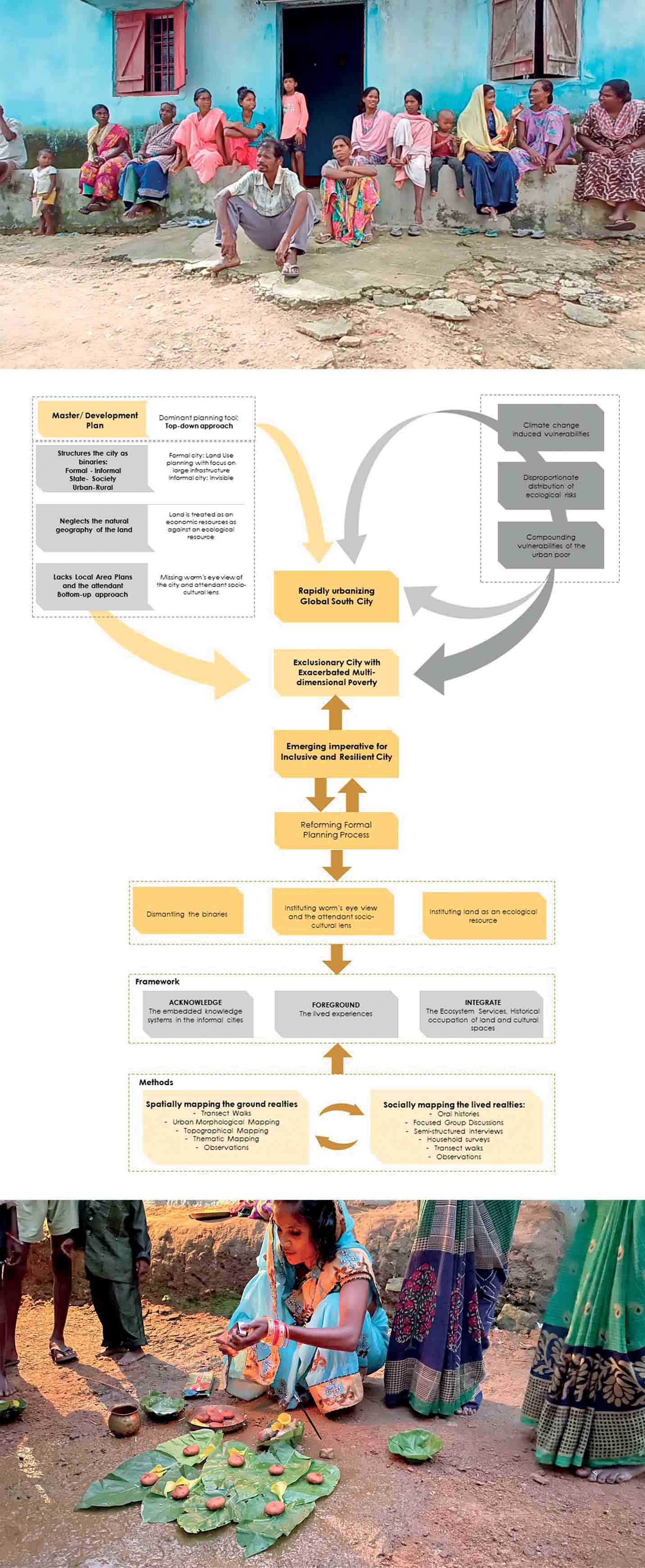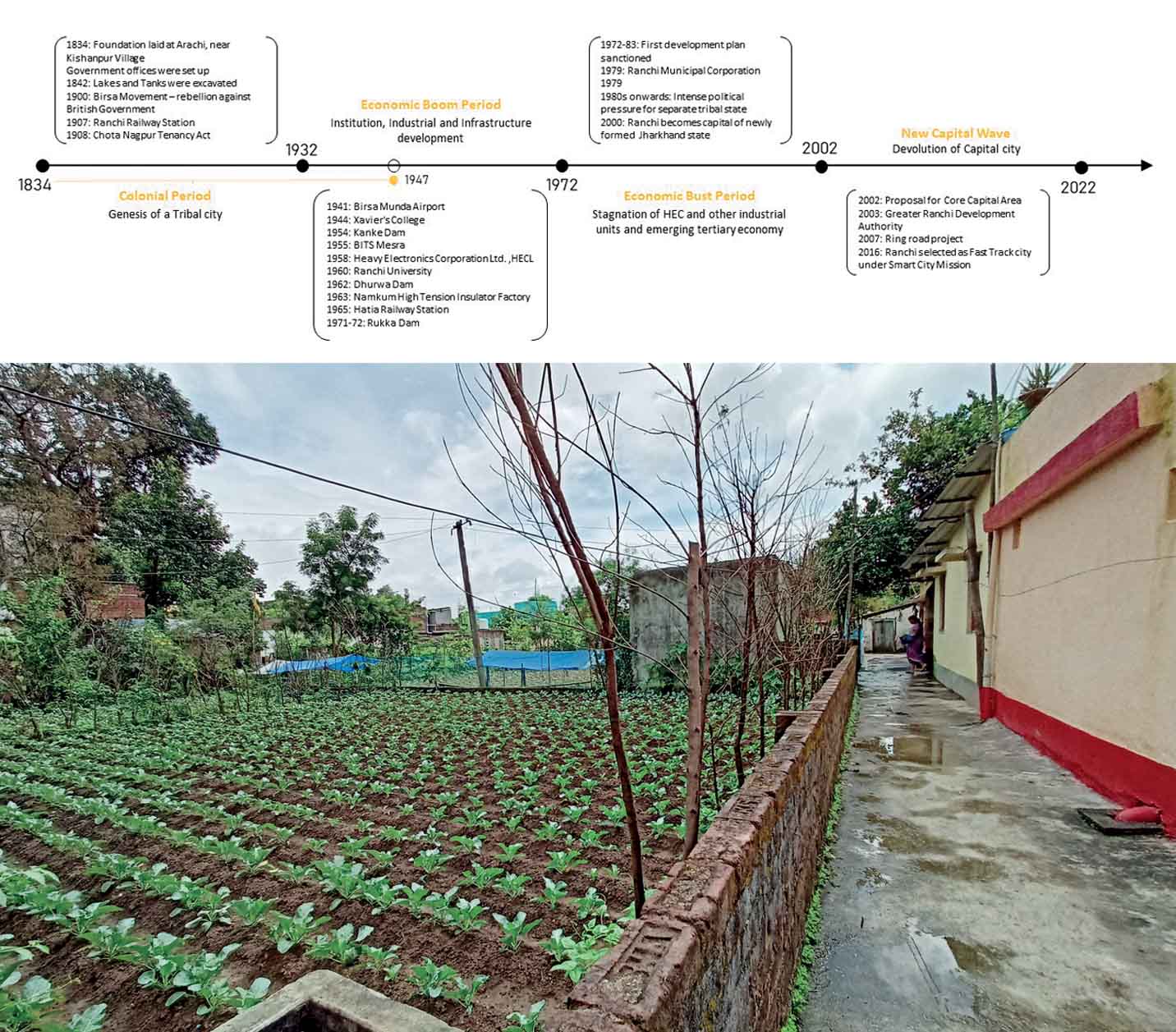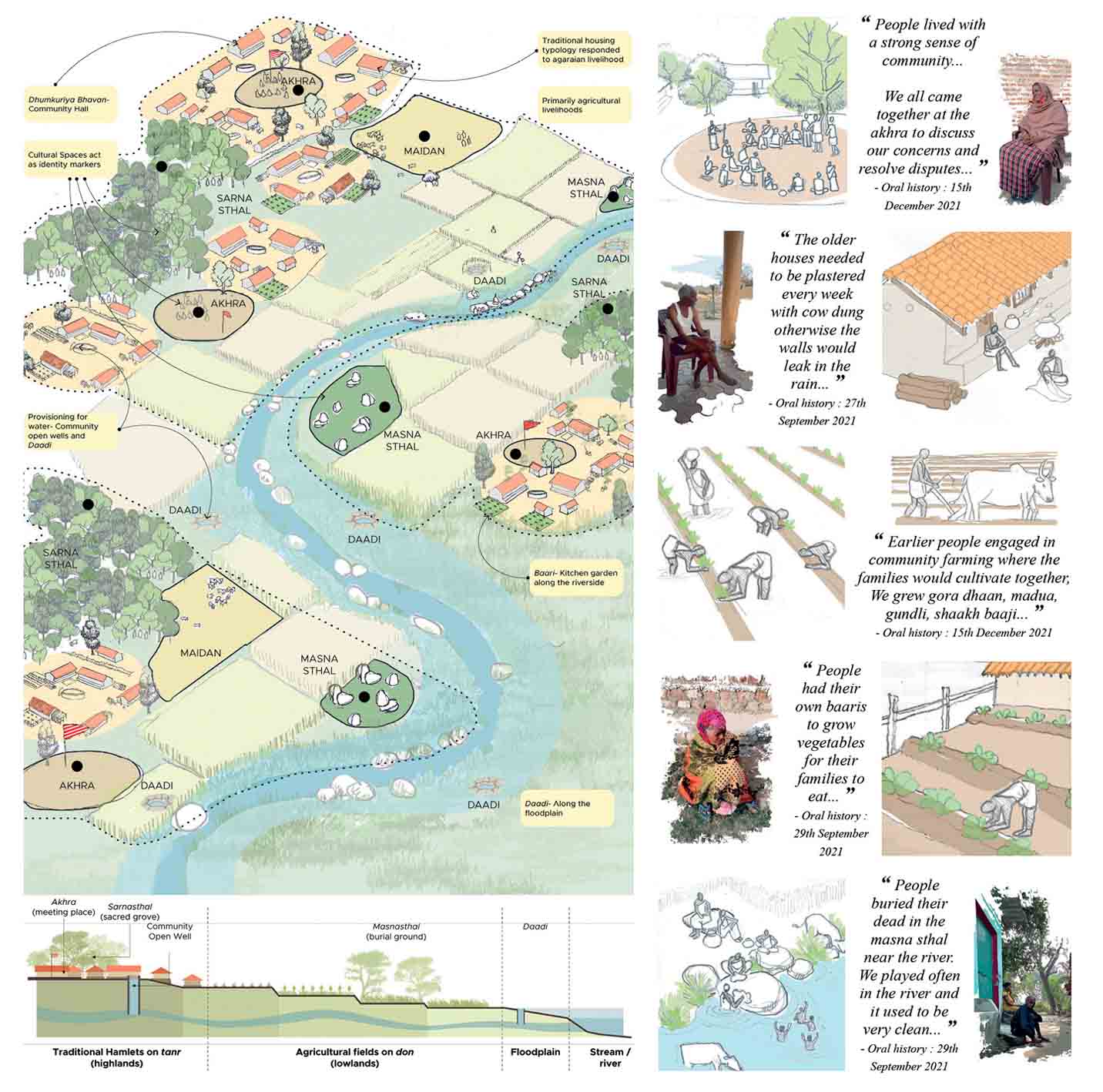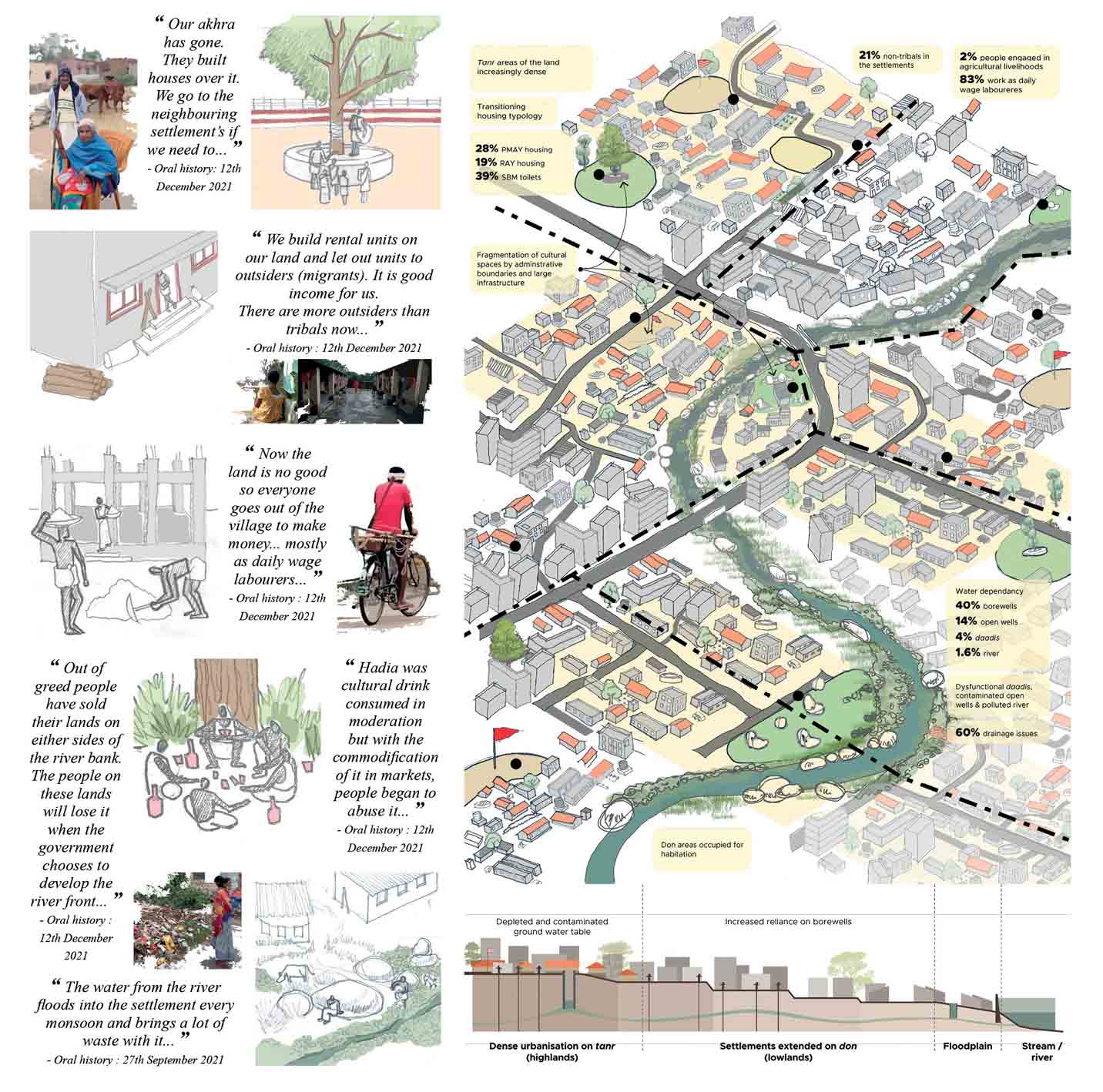There is a burgeoning scholarship that argues for storytelling as an important, yet undervalued tool for planning cities. While Van Hulst (2012)1 positions storytelling as a model for planning, for Throgmorton (2003)2 good planning can be a matter of persuasive storytelling about the future. Stories depict incidents, actors, events in a temporal and spatial setting and involve not just a mere narration of events. Rather, stories have the potential to ‘emplot the past’ while foregrounding their manifestations and implications for both the present and the future. Thus, storytelling has an element of ‘future-directedness’ where the past can aid in informing what needs fixing. That stories have the ability to talk about what is and what ought to be which renders them important methodological pathways to planning and managing contemporary cities.
Planning in India (and many developing countries) structures cities along binaries of the formal and the informal. While the former is analysed, constructed and provisioned through a top-down (bird’s eye view) lens, the latter is largely invisible. The complexity and dynamism of the ground reality in general and the informal city in particular renders the bird’s eye view approach ineffective and insufficient. Consequently, the needs and aspirations of the most vulnerable rarely fall within the radar of the formal planning processes. Furthermore, in provisioning and planning for the formal, there is an overt focus on land-use allocation coupled with large infrastructure provision, administration and management. Land is viewed as an economic resource. Missing here is an acknowledgement of the natural systems, i.e. comprehending land as an ecological resource. Cumulatively, unprecedented urbanisation and its impact on ecological systems is overwritten by an existing fabric of socio-spatial inequities within which the application of existing frameworks of top-down planning only serve to disproportionately distribute ecological risks and exacerbate multi-dimensional poverty. Thus, enhancing the resilience of cities and societies via a democratised, decentralised, pro-poor, bottom-up planning aimed at inclusive and resilient cities is the need of the hour.

Middle: Master Planning challenges and proposed responses
Bottom: Tribal women celebrating a local festival
A worm’s eye view planning lens, while conspicuous by its absence, is critical to informing the bird’s eye view. Storytelling (and attendant storyboarding) emerges as a critical tool in instituting a worm’s eye view enquiry and analysis. Collecting, constructing and communicating stories from the ground is invaluable in building a narrative of the city’s transformation. Using Ranchi, we construct ‘selective and purposeful’ stories, illustrated visually and spatially. The storyboards were arrived at through a combination of methods that included mapping the city and the settlements at multiple scales and conversations through FGDs, semi-structured interviews, oral histories, transect walks and participant observations.
The Ranchi city region began its genesis on a spatial geography comprised of loosely clustered tribal hamlets embedded in and integrated within the natural landscape. These settlements evidence self-sufficiency facilitated through a decentralised mode of collective living and managing. Communities relied heavily on eco-system services while stewarding nature. To illustrate, land occupation responded to the topography or the lay of the land. While habitations were concentrated in the tanr area – the highlands – the adjoining productive lowlands – the dons – were used solely for a variety of agricultural activities that catered to food requirements. Agriculture was the primary livelihood. Water was sourced through community wells, talabs (ponds or tanks), dadis and the river. Kitchen gardens or baaris provisioned the daily consumption of vegetables. These were nourished with grey water from the neighbouring households. Baaris were also used to grow grain saplings before transplantation in the fields. Similarly, housing typology responded to the agrarian lifestyle of the communities and the climate while the material was sourced locally.
Storytelling has an element of ‘future-directedness’ where the past can aid in informing what needs fixing
Habitations were marked by and interspersed with public community spaces such as the sarna sthal (places of worship), maidans (playgrounds), akhras (congregation spaces), dhumkuria bhavan (youth dormitories/education centres) and masna sthals (burial grounds). These spaces anchored community living and were markers of cultural identity. While distinct and self-sufficient, the hamlets were connected through cultural practices (jatras), social festivities (marriages) and haats (weekly markets). The latter allowed for social congregation and market transactions.
As modernisation took root, the city urbanised and rational planning assumed significance. The top-down approach was neither sufficient nor willing to comprehend, for instance, the evolved traditional occupation of land, its underlying logic and the embedded knowledge systems. Rather, it busied itself with allocation of land-uses supported by large infrastructure conceived and implemented centrally with little or no cognisance of the ground. It relies on high-level secondary data and land use surveys as an analytical frame, assuming the ground to be flat, uniform and standard. That the frame so constructed does not account for the socio-cultural practices of the people inhabiting this ground is a fallacy that needs immediate correction. A mapping of the contemporary city of Ranchi and its historical evolution evidences how the top-down approach has fragmented the hamlets, their eco-systems and everyday social and cultural lives that continue to survive even today.
How do these stories inform planning?
A starting point to reforming planning practice is to institute a worm’s eye view capable of communicating socio-economic, ecological, cultural and political ground realities. Within formal planning processes, grass-roots engagement begins and ends with enrolling the needs and aspirations of the habitations with an objective of catering to these needs. The story and the storyteller on the other hand connect the past with the future, the land with people and the people with the story (Smith 2012)3. In traditional societies such as those in India (and the global South) story telling is culturally appropriate for representing diversities of ground truths (Bishop, 1996)4. Thus, stories that employ the past and are future directed can inform contemporary planning practices as elaborated below.
Land occupation
Historically evolved patterns and systems of land occupation (structured around the tanrs and the dons, in the case of Ranchi) can guide the contemporary curation of habitation spaces while being cognisant of the ecological relationship between land, water and vegetation. This knowledge is invaluable to directing land-use planning and attendant infrastructure positioning. Mapping the natural geography, especially the lowlands and fragile landscapes as ‘positive constraints’ to the built fabric expansion is the first step. Premised on the natural capacity of land, the plan can potentially allocate the ‘positive constraints’ as spaces to be utilised to locate open space public infrastructure such as maidans, playgrounds, parks etc. Supporting it with appropriate context/location, specific development guidelines would be the next step. Such an approach would serve the dual purpose of protecting the natural systems that provision cities while avoiding disasters such as flooding and droughts, thus moving towards inclusive and resilient cities.

 |
Cultural spaces as identity markers
The mapping of traditional hamlets marked by cultural spaces is indicative of contiguous communities with near uniform socio-cultural and economic status representing similar needs and requirements. This is a valuable tool for ‘planning cities for its people’ where the hamlets are a rich source of the socio-cultural and economic practices. In addition, these identity markers can potentially evidence the scale, nature, appropriate use and relevance of public spaces.
Decentralised modes of basic service access and nature-based solutions
The hamlets evidence a decentralised mode of basic service access such as water and sanitation as well as their management. The attendant embedded knowledge, lived experiences and historically evolved, tried and tested management systems have the potential to inform and operationalise the recent calls for nature-based solutions as key to enhance and protect urban ecosystem services and human wellbeing under conditions of rapid urbanisation.
 |
 |
Urban commons and related benefits
While common lands fall largely within the public property ownership regime, community rights over land (which continue to hold, although with several legal and illegal dilutions) evidence the potential of decentralised use and management. Although there is a relatively higher (and increasing) focus on common land resources in the rural area and their critical role in provisioning rural communities, the same is lacking in urban areas. Urban commons while requiring a deeper investigation hold a similar potential in informing locally based responses and community-led solutions and decisions.
Conclusion
Formal planning practices in India are, on one hand, a misguided remnant of colonial planning. On the other, these represent the post-colonial modernisation and development aspirations. As urbanisation gains momentum, the homogeneous institutionalised practices of the state – ‘boundaries drawn unto’ – intersect with the distinct everyday practices, knowledge and imperatives – ‘boundaries drawn by’ – human habitations, and the ensuing recursive process of space production (Mohan, 2021)5 continues to thrive, offering precious insights for correcting our planning processes. Retrieving and reinventing traditional and experiential knowledge to inform the formal planning processes is critical to creating inclusive and resilient cities.
The findings from Ranchi are by no means isolated insights. Research on the urban villages in India and the global South – particularly Asia – is gaining traction. The ever-expanding city in the global South is on a never-ending quest of engulfing surrounding villages. These ‘urban villages’ hold the potential to generate stories premised on traditional wisdom, local knowledge and lived experiences as critical pathways to reforming planning practices.
All photos & graphics: Anjali Karol Mohan
REFERENCES:
- Van Hulst, M. (2012). Storytelling, a model of and a model for planning. Planning Theory, 11(3), 299-318.
- Throgmorton, J. A. (2003). Planning as persuasive storytelling in a global-scale web of relationships. Planning Theory, 2(2), 125-151.
- Parkinson, D., Bohemia, E., Yee, J., & Smith, N. (2012). Design Process and Organisational Strategy: A Storytelling Perspective
- Bishop, R. (1999). Collaborative Storytelling: Meeting Indigenous Peoples’ Desires for Self-Determination in Research.
- Mohan, A. K. (2021). Introduction—Exploring Urban ‘Southernness’: Praxes and Theory (s). In Theorising Urban Development from the Global South (pp. 1-28). Palgrave Macmillan, Cham.
This research has been funded under the Research Innovation Grant of The Nudge, Centre for Social Innovation. The author would like to acknowledge the reserach support of Anushri Tiwari and Reshma Mathew from Integrated Design as well as Gujarat Mahila Housing Trust in fascilitating the field engagement.




Comments (0)